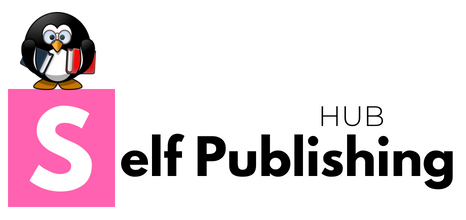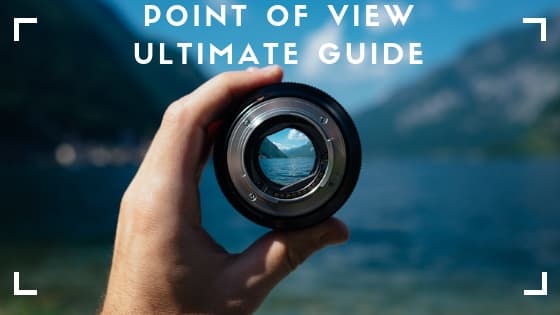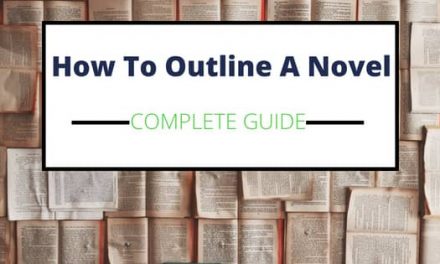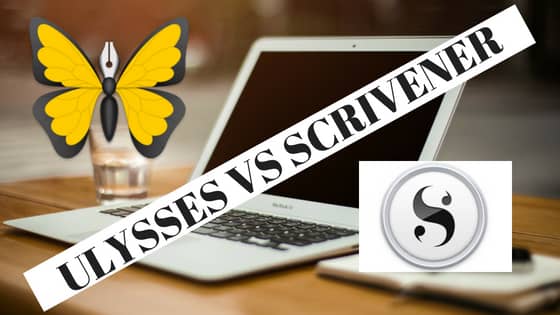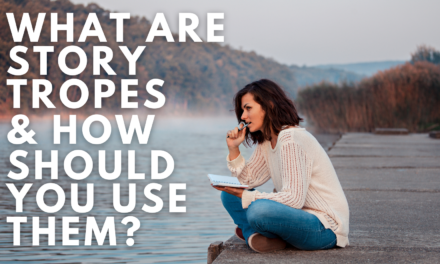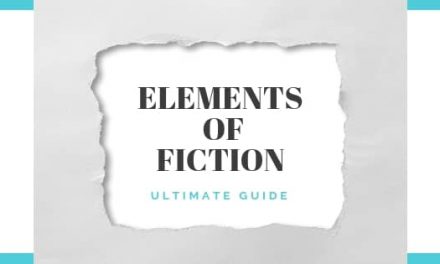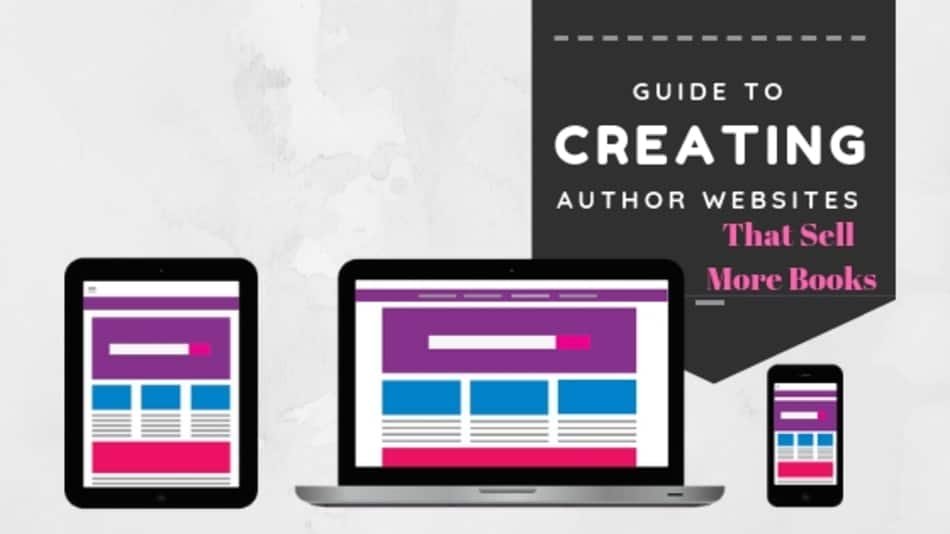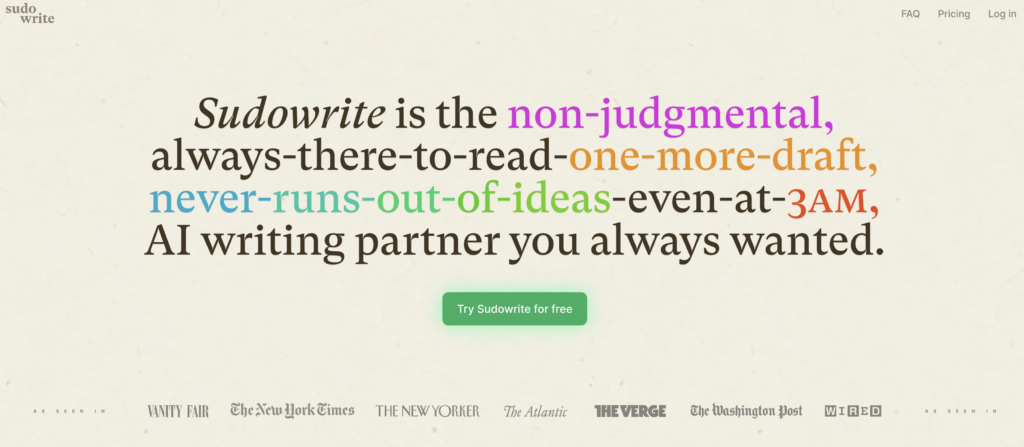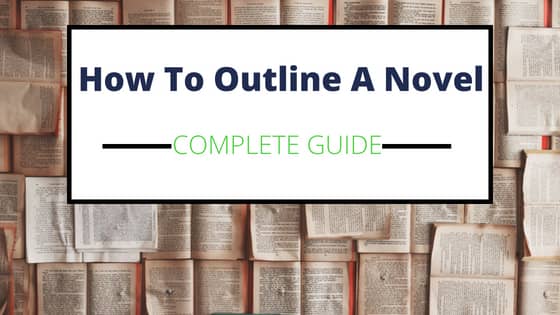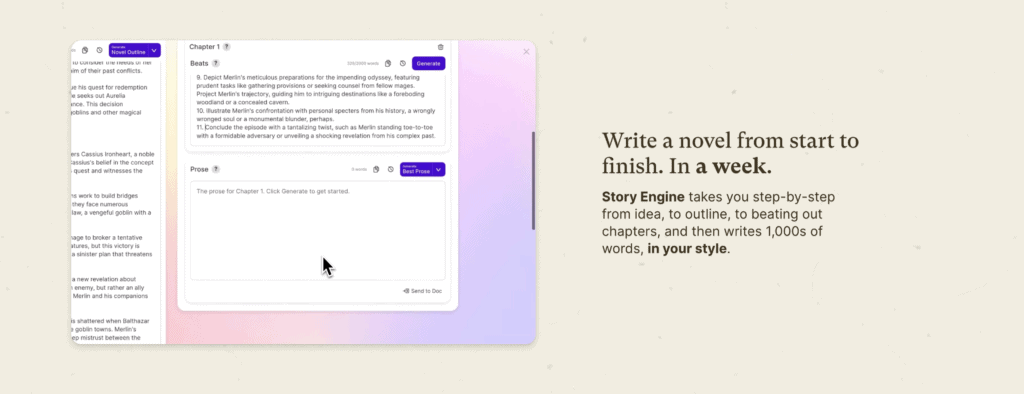In an earlier article, I shared what I learned trying to get a better handle on the Elements of Fiction. Through my initial research, I realized there was a lot more to learn about each of these fiction elements, so I created additional guides on Character Development, Plot, & Theme that I thought would be helpful. In this guide, we will take a deeper look at Point of View, understanding how to use it and why it’s not so scary once you get it.
What is the definition of Point of View in Literature? The definition of Point of View in literature refers to the author’s deliberate choice in deciding how the story will be narrated, specifically POV choice dictates the “camera lens” or perspective from which the story’s events will be told.
This definition of point of view may still seem a bit abstract, I know it did for me. So in the remainder of this article, I will try to simplify it further for you by doing the following:
- Explain Why Point of View is Important
- Identifying & Defining the different types of Point of View
- Spell out Pros and Cons of different POVs
- Give examples of each
- Answer related questions
Continue reading this guide to master the use of POV once and for all and turn it into another powerful tool in your writing tool belt.
Article Topics
Taking Your Definition of Point of View to the Next Level
Now that you understand the definition of Point of View in literature as referring to the perspective at which the author decides to tell the story. Let’s break down what that means even further.
In order to do this, we need to understand that there are essentially two things that go into creating that perspective the narrator has, no matter which POV you select.
The two elements that make up the narrators point of view:
- The Grammatical “Person”: This refers to the category of pronouns used in the writing, I, you, he/she, or they. This is usually the first part that everyone thinks about when discussing the point of view. This is a critical part of the point of view but as a writer, you need to consider the grammatical “person” choices along with the second element below, which is ultimately more important.
- The Level of Insight: that the narrator has. This is one of the lessons that really helped me understand POV choices once and for all. The level of insight the narrator has will ultimately decide what can and can’t be shared with the reader. As an author, you want to think about your characters and what level of insight you will need your reader to have to deliver the desired experience.
Here is a great little video that talks about these two concepts and how they contribute to the narrative point of view. Sorry, it’s a little shaky so if you get sea sick easy, skip it.
Why is Point of View Important to Your Story?
If you are like me, then you probably want to know the why behind everything to really give it meaning. This is common with most people, understanding why something is important is usually directly tied to how motivating it is.
So let’s start off by talking about why Point of View is so important to your story.
As the author, your choice of POV will ultimately dictate what perspective the story is told from. Each POV has some distinct advantages and limitations in how your story is told.
Your decision about which POV to use will ultimately dictate not only what perspective the reader sees the story from, but the level of character insight the reader is privy too during the story. Your POV choice will ultimately dictate every aspect of your story including voice and word choice.
Knowing this, it is critical that you choose your POV according to how close to the action and specific characters you want your readers to be in order to deliver your story in the most impactful method possible.
As a writer, strategically picking your point of view will elevate your book by creating an immersive story that communicates the exact experience you want to deliver to your readers.
Hopefully, I have your attention now as to exactly why the point of view is so important to your story, but don’t worry knowing is half the battle. (shout out to overused sayings from the 80’s)
What are the Different Types of Point of View?
I hope understanding that the grammatical person and level of narrative insight are the two key elements of POV helped you understand POV better. Now that we have a solid foundation, let’ s identify and take a look at the different types of point of view available to you as a writer. Specifically, we will define and look at them through the prism of grammatical person and narrative insight.
The different types of POV are as follows:
First Person Point of View
What is First Person Point of View? In the First Person Point of View, the story is told as a first-hand account of events through the eyes of the protagonist or narrator. Each of the events that are told is from the perspective of this imperfect narrator and thus the reader can only be privy to the events as they unfold for that character. If the narrator is a character close to the protagonist, then the story can be considered first-person peripheral. Learn how to write compelling first-person narratives here.
- Grammatical “Person” in First Person POV
- First person Point of View is written with first-person pronouns to tell the story, such as I, Me, My, Mine, Myself or the plural form We, Us, Ours, Ourselves.
- Level of Narrative Insight in First Person POV
- The narrative insight is limited to the person from which the story is being told. The narrator will know the thoughts and emotions of that character or themselves but will not be privy to happenings that occur outside of their direct scope, nor would they know the thoughts and feelings of other characters.
3 Types of first-person narrators:
- The Main Protagonist– Told from the direct perspective of the protagonist in the story.
- First Person Major or Minor– This is when the story is told from the first person perspective of a minor character close to the protagonist, or from another Major character in the story that is not the protagonist. These first-person narrators will give their perspective of what’s happening to the protagonist but will not know what they are thinking or feeling.
- The First Person Observer- This narrator witness and tells the story from their personal perspective but isn’t necessarily experiencing the story. This is similar to 3rd-person omniscient because he can give a somewhat objective recounting of the story, however, he is not all knowing like 3rd party omniscient and is limited to his/her own perspective.
Second Person Point of View
The second main type of Point of View is the Second Person.
What is the Second Person Point of View? In the second Person Point of View, the narrator relays experiences that happen to another character, and that character is “You”. The second person is more often used in non-fiction writing.
- Grammatical “Person” in Second Person POV
- The Second Person POV uses pronouns such as You, Your, Yours to tell the story.
- Level of Narrative Insight in Second Person POV
- The Narrator knows the person well and is telling a story about the reader.
Sometimes the second person point of view can be thrown into a first or 3rd person narrative by breaking the 4th wall. This is when the narrator stops and talks directly to the audience. William Shakespeare sometimes used breaking the 4th wall in his plays like when Puck does it in A Midsummer Night’s Dream.
Third Person Point of View
Let’s take a look at the next type of point of view, the Third Person POV.
What is Third Person Point of View? In the third person point of view, the narrator isn’t in the story but telling the story from the outside looking in.
- Grammatical “Person” in Third Person POV
- The Third Person POV uses pronouns such as he, she, they, or it.
- Level of Narrative Insight in Third Person POV
- The level of narrator insight will shift depending on the type of 3rd person narration you are using.
There are 3 different types of 3rd person narration. They are:
- Third Person Limited: The Narrator is limited to the perspective and experiences of one character.
- Third Person Multiple: The Narrator follows multiple characters in the story, and he can switch between characters. It is still limited as the narrator isn’t all-knowing and is limited to the characters he is following.
- Third Person Omniscient: The narrator in third person omniscient is god-like. He is all knowing, including how everything is connected as well as the inner motivations and thoughts of every character.
Read this for a more detailed explanation of Third Person Point of Views.
Pros and Cons of the First, Second, & Third POV
You now have a full understanding of the definition of point of view, as well as the differences between types of point of you. The next important lesson in point of view is understanding the pros and cons of each.
If you recall I said that POV choice should be made in a strategic way by the author. Understanding the definition and different types of POV is the first step in making that strategic choice correctly.
In this section, I will lay out the pros and cons of each POV so you can get a better idea of which choice might be the best fit for your story.
First Person Point of View
PROs of First Person:
- It allows the author to pull the reader in immediately in terms of their connection and intimacy with the characters.
- It’s a natural way of telling stories which makes it direct and easy to understand.
- Allows the author to have an immediate connection with the character.
- Put’s readers in the mind of the narrator by allowing the author to include information about thoughts and feelings, which allows the reader to empathize with the main character.
- Easier for the narrator to say what he wants.
- Makes the storytelling more direct.
- Creates a strong connection between thoughts and feelings of characters and the reader.
- The potential for the Unreliable Narrator
CONs of First Person:
- The View Point is inherently limited, meaning the narrator can tell his story but won’t necessarily have the freedom to tell the whole story since it is limited to seeing the story through a singular pair of eyes.
- It is always biased, the degree to which the narrator lets the biased be known can differ, but since the story is being told from a first person account, the internal biases of the narrator are always present to some extent.
- Can narrow the writer’s ability to explore the world, as he would be locked into the first-hand accounts of what is occurring directly to the character.
- Makes it difficult to explore sub-plots that may not directly affect the main character or the close minor character narrating his story.
Here is a great video all about writing in the first person.
Second Person Point of View
PROs of the Second Person
- Puts the reader directly into the story
- Reader Is the closest to the action because the story is about them.
- Great for non-fiction and instructional writing
- If done write the reader will be immersed in the story and all its emotion
- Allows for an almost conversational tone with the reader
CONs of the Second Person
- Very hard to pull off well
- Limiting for the writer
- If you impart too much onto the reader they may not believe it, too little and they may be left with a vapid empty experience
Here is a great video on the Pros and Cons of the Second Person Point of View.
Third Person Point of View
PROs to the Third Person Point of View
- Allows the author the most control, to give insight about the character and what is going on in the story as a whole
- Can stay close to one character- 3rd person limited, or jump from character to character with 3rd person limited.
- Provides a godlike narrator option with third-person omniscient
- Great to build tension as the story can be told from multiple perspectives
- The writer can convey the difference between what the character believes he’s experiencing and what is actually happening on a larger scale
CONs to the Third Person Point of View
- Keeps the reader at arm’s length compared to the first or second person
- Can become confusing for the reader if there are too many character POVs or if it is poorly executed
- Might keep the readers from fully empathizing with every character
- Authors can get caught jumping around too much
- Sometimes creates an urge to tell instead of show
Here is a great video that focuses specifically on the pros and cons of Third Person Limited.
Here is another video that focuses on the pros and cons of 3rd person omniscient.
Point of View Examples
Ok, we’ve gone pretty deep into Point of View up until this point. I think you probably have a pretty good idea of what each of the different types of point of view has to offer at this point, at least I hope.
So I think at this time it might be helpful to give you some clear examples of each POV to really drive the concepts we’ve discussed home.
Examples of Books Written in the First Person Point of View
Here are some examples of stories written in the First Person Point of View.
- The Catcher in the Rye, by J. D. Salinger – First Person Main Protagonist
- The Hound of Baskervilles, by Sir Arthur Conan Doyle – First Person from Another Major or Minor Character
- The Great Gatsby, by F. Scott Fitzgerald- First Person Observer
- The Martian, by Andy Weir
- The Handmaid’s Tail, by Margeret Atwood
- To Kill a Mocking Bird, by Harper Lee
You can check out a large list of books written in the first person on GoodReads
Examples of Books Written in the Second Person Point of View
Here are some examples of books written in the Second Person POV.
- Basically all choose your own adventure books
- The Cave of Time, by Edward Packard
- Bright Lights, Big City by Jay McInerney
- Self-Help by Lorrie Moore
Here is a larger list of books written in the second person on GoodReads.
Examples of Third Person Point of View
Here are some examples of books written in the third person point of view.
- 1984, by George Orwell – Third Person Limited
- A Song of Fire and Ice, by George R.R. Martin – Third Person Multiple
- One Hundred Years of Solitude, by Gabriel García Márquez – Third Person Omniscient
Here is a larger list of books written in the third person on GoodReads. (Although, I’m sure you have no shortage of examples here)
POV Related Questions
How to choose a Point of View for Your Story?
With all this being said, how do you choose the right Point of View for your story? As an author, you need to consider a few crucial elements when deciding on which POV is best for your book.
Here are some of the questions you should keep in mind when choosing a point of view:
- How intimately do you want your readers to know your character?
- How much distance do you want between your reader and the story?
- How much freedom do you want as the author to tell the story?
- Which Point of View is best suited to create the reader experience you are hoping for?
- Are there any other great novels with similar stories- what point of view did they use?
- What point of view is most familiar to the readers in the Genre?
- What POV are you most skilled in using- Is it the right time and project to stretch your skills?
Can a story have multiple POVs?
Often writers ask if stories can have multiple Point of Views. The answer can sometimes confuse people. So the answer is you need to pick a point of view for your story and stick to it. Meaning, if you pick First Person Observer or Third Person Omniscient then that needs to be the Point of view for the entire work.
However, this shouldn’t be confused with saying that you can’t have multiple points of view characters in a novel. In fact, as we have already reviewed some of the different POVs are designed specifically for that, like 3rd person multiple.
What you want to remember about the point of view is that you are trying to create the best reader experience possible, so keep it easy to understand or your readers might get confused and frustrated.
What are the common mistakes writers make when it comes to POV?
- Switching Point of View willy-nilly will confuse your audience
- Not being strategic when picking their point of view
- Not understanding the limitations of each POV or actively choosing not to stick to them
- Head Jumping from one character to another when you are writing in Limited-Third Person
- Self-Description in First Person narration
- Not Being consistent with your Point of View
What is the Unreliable Narrator?
We mentioned the Unreliable Narrator several times during this Point of View Guide. So I thought some of you might be asking, what the heck is the Unreliable Narrator?
The Unreliable Narrator is mostly found in First Person novels. This is where you as the author essentially use the inherent limitations of the first person narrator.
The Author can use this unreliable author to give inaccurate or incomplete information to the reader. Sometimes the narrator is unreliable or outwardly lies on purpose, but sometimes the unreliable narrator believes their own incorrect views of the world so deeply, they have no choice but to offer the reader an inaccurate accounting of what is happening.
Authors can use this effectively to keep readers in suspense by creating tension about what is real and what is false in the reader’s mind.
Example of books written with an Unreliable Narrator is:
- American Psycho, by Bret Easton Ellis
- We Need to Talk about Kevin, by Lionel Shiver
- The Life of Pi, by Yann Martel
What is the Rashomon Effect?
You may have heard a term called the Rashomon Effect when it comes to Point of View. So what is the Rashomon effect? The Rashomon effect is when different characters give completely disparate accounts of the same event. This term comes from Akira Kurosawa’s 1950 Film, Rashomon. This is something that can be accomplished in writing as well and could be an elegant way to approach the point of view of a specific type of story.
